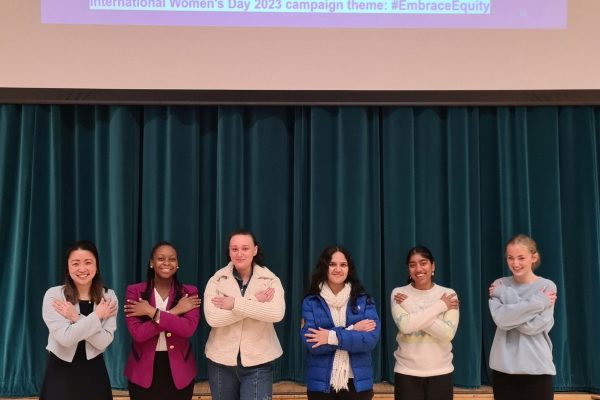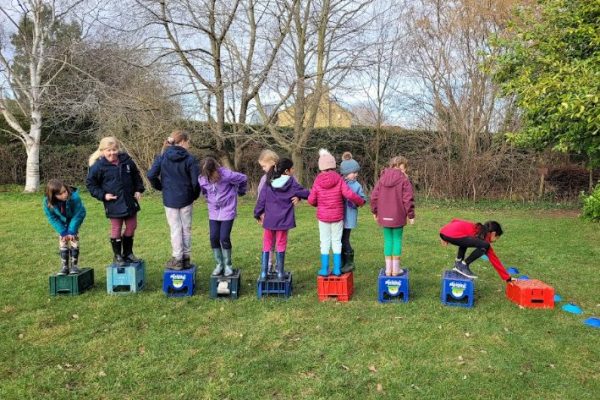Plant Therapy and Reconnecting with Nature
The Rowan tree outside my classroom has just started to show signs of life. It is not the first tree to blossom in the spring but it is one of my favourites because they have, what garden centres nationwide would describe as, “Three seasons of interest!”. It sits next to another tree which I think (having trawled multiple dendrological websites), is a Northern Capalta, more commonly known as an Indian Bean Tree, which also offers an impressive floral display in late spring and follows this up with the production of abundant slender seed pods which look like runner beans. I have grown particularly fond of these two individual trees because they have framed the view from my classroom for the last 11 years. The bright green buds that burst forth from the Rowan at this time of year, are a sure sign that spring has officially sprung and warmer climes are on their way. Today, as I write this, there is not a cloud in the sky and the hopeful, watery warmth from the March sun promises a very different outlook on this season from the sudden and somewhat aggressive flurries of snow that hit us a fortnight ago.
As a keen gardener, I love this time of year. The reappearance of daffodils with their hopeful yellow glow, or feathery shoots from the peonies reassuring us that they have survived another cold and wet winter are wonderfully affirming that new life is on its way. For many of my students however, this time of year is not as joyful. The looming exams that will start in earnest after the Easter break are a hurdle that must be faced head on for all our GCSE and A Level pupils. A certain level of concern, and even anxiety, is natural and to be expected at this time of year as they prepare for these important assessments. However, there are things that can be done to alleviate some of this worry.
Getting outside and reconnecting with nature is an effective and easy method of reducing some of the anxiety associated with exams. There is a reason that GPs and other medical professionals are starting to prescribe time outside to their patients. Not only for physical exercise and fresh air, but also for positive mental health and wellbeing. You do not have to be particularly green fingered to enjoy the positive impact of getting outside and even sitting in the garden for half an hour can be hugely calming and rewarding.
There is plenty of available research around the positive impacts of plants on our wellbeing. Horticultural therapy, sometimes referred to as ‘Plant Therapy’, is a technique that relies on plants and gardening to help people overcome health issues such as high blood pressure and memory disorders. It can also greatly help those battling depression, anxiety, addiction, and for survivors of abuse. This form of therapy is connected to the concept of ‘biophilia’, which is the idea that people are genetically connected to nature and plant life. The goal of horticultural therapy, or ‘Plant Therapy’, is to help patients build self-confidence, social connections, increase compassion, and get out into nature more frequently. Watching the latest David Attenborough series, which focuses on the British Isles, I am reminded of the beauty that is on our doorstep and would actively encourage anyone to get outside and explore and enjoy the benefits of reconnecting with our natural environment.
Many studies have been conducted to prove that plants have therapeutic effects on people. One clinical study in particular found that people who care for plants tend to be more compassionate and empathetic towards those around them. Additionally, further research by George Berreto (et al, 2017) published with the National Library of Medicine, reinforces that this form of therapy has a positive impact on anxiety and can improve overall mental health and wellness. Some universities, such as the University of North Carolina at Chapel Hill, continue to see positive results in research that gardening is a productive way to improve mental and emotional health.
Engaging with nature outside of the house has other benefits. As humans, we are not designed to be cooped up inside all day. We need natural light and fresh air. Movement offers us an opportunity to refuel our brains with oxygen and the sunlight helps our bodies to absorb key vitamins that are essential for both physical and mental wellness.
For those of you with children who are sitting public exams this year, talk to them about their revision timetables. Check in with them that as well as having a sufficiently rigorous grasp on their revision for each subject, they are also scheduling regular and meaningful breaks. Some of these should be outside, away from their screens, away from social media and away from the noise of continuous online interaction. Take a moment to stop and breathe with them outside. Slow the pace completely and reset before the next round of revision kicks in. Not only will this provide them a much needed mental recharge, boost their mood and restore some positivity, it will also make them significantly more effective as learners and ensure that the revision they are completing is high quality and impactful.
For those of you with children in other year groups, who can perhaps enjoy a more relaxed pace to the Easter holidays and the changing seasons more generally, what activities will you be planning that are outside? They do not need to be extravagant or expensive. A simple walk can do wonders for the soul and offer opportunities for discussion and reconnection with each other, as well as with nature. Encouraging them to learn a new skill outdoors, like gardening, can be incredibly rewarding and offers ongoing activity and interest as we move into the summer months.
Now, as a Geographer, I am painfully aware that our British weather is not always conducive to enjoying the outdoors. Whilst I would always still encourage donning your wellies and tromping through the puddles on a brisk, if a little soggy, walk, I appreciate that this is not for everyone. If you can’t get outside, or the garden is not an accessible or practical option for you, bring the outdoors indoors. House plants can be an inexpensive but effective way of experiencing similar benefits to being outside. Certainly the popular trend of biophilic design in modern day living, looks as though it is here to stay and again, the research supporting this is wide and compelling. Caring for any living thing, flora or fauna, that will develop and flourish over time provides us with a great sense of achievement and teaches responsibility. Whilst a pet may be impractical for many reasons, a plant that relies on you for survival is a great way to teach children responsibility, without the same impact if things go slightly pear shaped. Even the smallest amounts of plant care, with specimens that are simple to look after and require very little fuss, can help children to appreciate nature, develop compassion and strengthen their skills in empathy. There is no feeling like seeing a new shoot from recently planted seeds, or a fresh leaf from a propagated succulent, or the bright flash of colour from the first flower, because at that point you are rewarded for all the love and hard work that you have put into it.
Plant Therapy, by Dr Katie Cooper, talks about why being surrounded by house plants can naturally boost your wellbeing, no matter what your environment. Living in a world full of technology and the ever increasing pace of modern life, tending to and caring for plants, both in and out of the house can offer an escape from the pressures of the daily routine and offer us a deep rooted connection to nature. The mindful nature of caring for house plans or tending to our gardens has also been compared to meditation. The process of focusing the mind on another task and being present in that moment can be wonderfully distracting from anxieties and offer us a much needed break from our screens or our textbooks.
For me, the Easter holidays offer these same moments of peace, tranquillity and reward in the garden. In between the moments of waging a war on the slugs that persistently attack my beloved hostas, I know I will take great pleasure in the methodical and rhythmic actions of weeding, re-planting and general tidying as well as enjoying the mood boosting explosions of colour from the cherry trees and spring flowers that come into their own at this time of year.
I wish you all a wonderful break over the Easter period, when it comes at the end of next week, and I hope that it offers you all a chance to recharge after a busy and high energy term. Very best of luck to those preparing for exams and I hope that as part of that preparation you are able to get outside, or reconnect with nature in your own way so that you are your best selves for the GCSEs and A levels when they start in May.
Mrs Kneen
Deputy Head Pastoral









